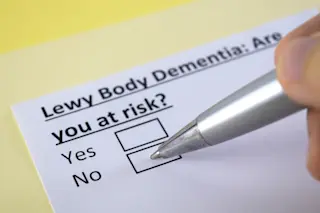Although Lewy body dementia is one of the most common forms of dementia, it’s not exactly a household term, and many people are unfamiliar with it. In the past, many clinicians have also not known much about it or how it’s distinct from other dementia types.
One advocate described how he researched dementia after his wife was diagnosed with Alzheimer’s disease in 1999. He told her physicians he believed his wife had Lewy body dementia and worried her treatment plan might be harmful. Her care team admitted they weren’t familiar with Lewy body dementia, and one even dismissed the possibility by saying, “never heard of it.”
In the past few decades, scientists have learned more about Lewy body dementia. Although there isn’t a cure, proper diagnosis can offer caregivers more direction on assisting their loved ones.
With Lewy body dementia, a person develops a buildup of alpha-synuclein, a type of ...















